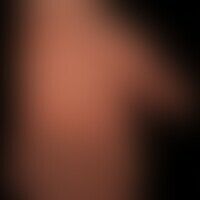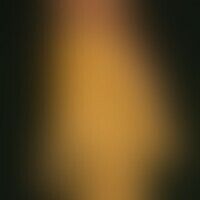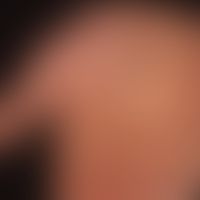
Nevus verrucosus Q82.5
Naevus verrucosus (detailed picture) striped arrangement of yellow-brownish papules and plaques.
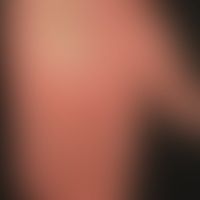
Psoriasis palmaris et plantaris (plaque type) L40.3
Psoriasis palmaris et plantaris (plaquet type): island-like, wart-like plaque covered with firmly adhering scales. has been present for several months in a scattered pattern. deep transverse rhagade.

Keratosis palmoplantaris diffusa with mutations in KRT 9 Q82.8
Keratosis palmoplantaris diffusa circumscripta: Thick, waxy, yellowish, plate-like horny layer which covers the entire palm of the hand and also the sole of the foot. The mobility of the hands is restricted. Characteristically, the red seam of the affected groin skin shown here separates the infected skin from unaffected field skin.

Psoriasis palmaris et plantaris (overview) L40.3
Psoriasis palmaris: dry keratotic plaque type, chronic flat hyperkeratosis that has led to a considerable restriction of hand movement.

Hand and foot eczema, hyperkeratotic-rhagadiformes L24.9

Bowen's disease D04.9
Bowen's disease: chronically stationary, slowly increasing in area and thickness, sharply defined, now clearly (knot formation), symptom-free, red, rough, sometimes scaly and crusty plaque on the palm of the hand.

Keratosis palmoplantaris diffusa with mutations in KRT 9 Q82.8
Keratosis palmoplantaris diffusa circumscripta: Thick, waxy, yellowish, plate-like horny layer that covers the entire palm of the hand and also the sole of the foot; the mobility of the hands is restricted.

Keratosis palmoplantaris diffusa with mutation in keratin 1 Q82.8
Keratosis extremitatum hereditaria transgrediens et progrediens.

Keratosis palmoplantaris diffusa with mutations in KRT 9 Q82.8
Keratosis palmoplantaris diffusa circumscripta: detailed view
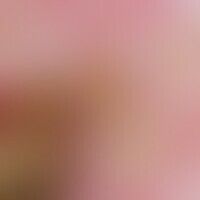
Carcinoma verrucous (overview) C44.L
carcinoma, verrucous. detailed view of the chronically stationary skin change. the dry, dirty yellow, torn, rough, crusty, fissured, verrucous surface of the plaque is easy to recognize. the skin change has grown only slowly within the last 10 years.
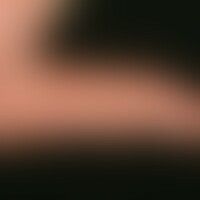
Hand and foot eczema, hyperkeratotic-rhagadiformes L24.9
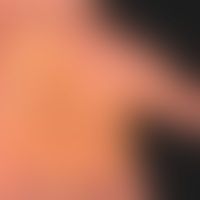
Psoriasis palmaris et plantaris (plaque type) L40.3
psoriasis palmaris et plantaris (plaque type): chronic inpatient type. deeply drawn hand lines. there is a risk of rhagade formation here. oval encircles the sharp marking zone to the wrist. arrows mark the edges of the psoriatic plaques.
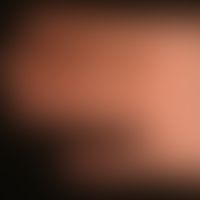
Skabies B86
Scabies: long-term untreated, only moderately itchy scabies, with infestation of the entire integument. eczematous, pyodermic skin lesions on the fingers. remark: clear neglect of the patient
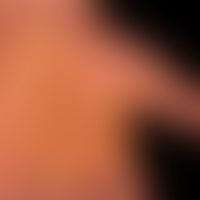
Psoriasis palmaris et plantaris (overview) L40.3
Psoriasis palmo-plantaris. dry keratotic plaque type (only little successful pre-treatment) with sharply limited (typical is the sharp limitation to the field skin of the wrists, distinction to chronic hand eczema). painful rhagades in the skin tension lines (see ball of the hand).
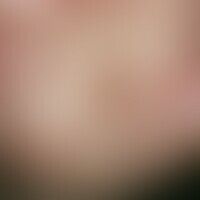
Psoriasis palmaris et plantaris (overview) L40.3
Psoriasis palmaris et plantaris. multiple, firm, red, rough papules and plaques with firmly adhering cap-like scaling. 14 days before, the patient had experienced a massive pustular thrust of the previously known psoriasis.

Keratosis palmoplantaris diffusa with mutations in KRT 9 Q82.8
Keratosis palmoplantaris diffusa circumscripta. 2-year-old boy has a chronic, congenital, smooth, evenly distributed, waxy thickened and yellowish discolored plaque formation of both palms. No symptoms. It is an autosomal dominant inherited palmoplantar cornification disorder.

Keratosis palmoplantaris diffusa with mutations in KRT 9 Q82.8
Keratosis palmoplantaris diffusa circumscripta, congenital, massive, evenly distributed, waxy corneal layer in adults, no symptoms!
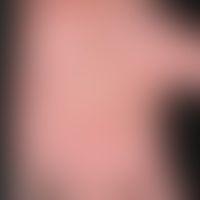
Pustulosis palmaris et plantaris L30.2
Pustulosis palmaris et plantaris: acutely occurring, disseminated, 0.2-0.4 cm large, smooth yellowish pustules next to older, dried brown spots; neither history nor clinical evidence of psoriasis.

Carcinoma verrucous (overview) C44.L
Carcinoma, verrucous. Chronically stationary, slightly increasing in the last 10 years, coarse plaque with dry, dirty yellow or brownish, torn, rough, crusty fissured, verrucous surface.

